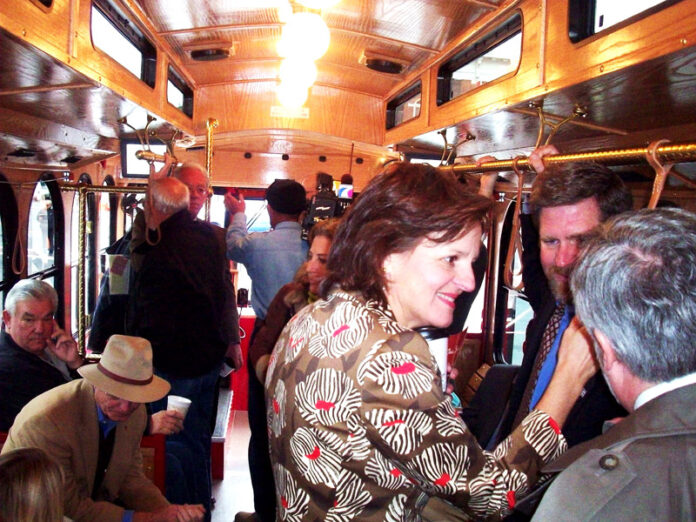
You don’t have to be a TV talking head or an economist to know that nationwide jobs have been harder to come by over the past few years. The same holds true for the Roanoke region. Historically the area has been slower to enter a recessionary period and has not been subject to the wild boom and bust swings seen elsewhere. There are no casinos here, nor are there automobile manufacturing plants and subdivision after subdivision of vacant homes, built on spec, hoping that “They Will Come” if you build them.
Nevertheless, the Roanoke Valley has lost jobs, albeit at a slower pace than the national average. In 2008 unemployment rates in Roanoke went up for the first time in four years, according to a report prepared for the non-profit Council of Community Services. The Roanoke Metropolitan Statistical Area (MSA) showed an unemployment rate in late summer ’09 of about two points below the national average of just under ten percent.
High-end grocer Ukrop’s moved out last fall, Freight Car America suspended railcar production in downtown Roanoke and Daleville-based Jtekt will close its automotive parts manufacturing plant in 2010 — idling more than 200 — so the news hasn’t been all that good.
On the local real estate front, HousingPredictor.com forecasted an average housing value dip of 12.8% for 2009, while noting that things were worse in other parts of the Commonwealth. Foreclosures have not reached epidemic proportions in the valley, as noted by some realtors, due again in part to the fact that Roanoke seems to avoid the extreme highs and lows.
There are bright spots however, as Roanoke moves forward, looking to become a high tech, bio-medical center in Southwestern Virginia. The Virginia Tech Carilion School of Medicine and Research Institute constitutes a partnership between the state’s largest research university, and the region’s largest employer.
Biomedical and clinical research are its focus, with spin offs and related businesses projected to materialize in the area. The 40 million dollar-plus investment includes a medical school, slated to open for its first class in the fall of 2010. More than 40 research groups could occupy the complex on South Jefferson, part of the larger Riverside Centre in what once was essentially a brown field.
Trolley car service from South Jefferson to downtown Roanoke and back, put in place last year, was initiated in large part to capitalize on the expected influx of health care professionals at Riverside and Carilion Roanoke Memorial that may want to eat and shop downtown during lunch hours.
Elsewhere, ADM Micro, occupying part of a building where Johnson & Johnson once made contact lenses (funded in part with Roanoke City incentives) continues to make strides. The NewVa Corridor Technology Council recognized the energy management company, founded by engineers and Virginia Tech alums, as a “Rising Star” in 2009. It employs about 50 and seems poised to capitalize on the “green” movement by offering high-tech systems that can help companies manage their energy use.
Roanoke Regional Chamber of Commerce president Joyce Waugh, on the job since October 2008, says her organization has lost about 300 members from a high of 1600 in recent years, through mergers and contraction. “The majority of our members are small businesses,” says Waugh, who has worked for the Chamber for almost a decade and spent time lobbying the General Assembly before being named president.
“It really highlights so many of the good things about the region,” adds Waugh about small business. “They’re the underpinning [and] not the ones who got us into this financial downturn. I believe they’ll be the ones that turn us around. That diversity is really a strength.”
In late 2009 Waugh said Chamber members were offering her “mixed reviews” of where things were headed. “A lot were seeing some signs of improvement. I’ve talked to other people that were [just] holding their own.” Some local companies are having to look out of town for contracts and “be a little more creative” in order to stay afloat during a sluggish economy. “Business concerns always include a push for less regulation,” says Waugh.
Other factors continue to help draw people here: quality of life assets like the obvious outdoor amenities are “probably at the top of the list, even though that’s more difficult to quantify.”
A quality of life to-do list on the Chamber’s website (RoanokeChamber.org) includes renovations to the downtown Farmer’s Market, the historic City Market building and Center in the Square, a cultural hub, not to mention a new amphitheater proposed for Elmwood Park. “It’s not going to all happen overnight,” notes Waugh of the tens of millions required to make it all happen.
The relatively low cost of living and shorter commute times weigh in Roanoke’s favor, although Waugh and other business leaders have advocated for passenger rail service as a way to increase the valley’s connectivity to places like Washington and Richmond.
Waugh says the Roanoke area is poised to make a strong comeback when the economy breaks free from neutral and goes into drive again; “we’ve got a very good, strong work ethic and skilled workers.” Some of the indicators she’s seen target 2012 for a complete recovery, but Waugh isn’t convinced. “I think they’re all guessing. It’s easy to be a prognosticator.”
A fair number of skilled but underemployed workers will be hungry to take on higher paying jobs when they are made available. “All of those things play into why someone would start or grow a business here,” says Waugh. “I think we’ll continue to do all right [with] a few blips along the way.”
By Gene Marrano [email protected]